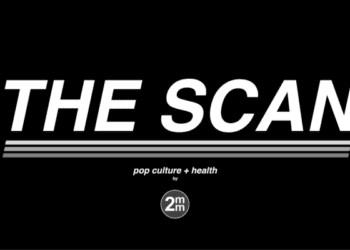Rapid genetic testing useful for diagnosis of critically ill children
1. In a cohort of children under the age of 12 months admitted to the intensive care unit (ICU) without a clear diagnosis, rapid, targeted genetic testing revealed a diagnosis in about one-third of patients.
2. Genetic diagnoses significantly impacted the care of those children identified as having a genetic mutations, leading to removal of unnecessary treatment in a number of children.
Study Rundown: Timely diagnosis of genetic diseases in severely ill children can be difficult and lengthy, yet definitive diagnoses are often critical. In this study, researchers used rapid whole genome sequencing (WGS) to analyze specific genes as part of the diagnostic work up in infants under age 1 admitted to the ICU. This study included critically ill infants with clinical suspicion of a genetic disease, but without a clear diagnosis. Patients identified as “critically ill” included infants with cardiorespiratory insufficiency requiring a ventilator or organ dysfunction which was thought to have imminent risk for cardiorespiratory insufficiency. The team assessed diagnostic yield, speed of results, and the effect of WGS on clinical management. Variants discovered after WGS were filtered through a number of genetic databases for assessment of minor alleles, and variants remaining were evaluated manually by investigators. Of the infants included in the study, about one-third were identified as having a genetic mutation as the cause of their presenting illness. In the majority of children with identified mutations, unsuccessful intensive therapies were withdrawn following diagnosis. The study was limited by its small sample size and completion at a single center, but demonstrates the potential clinical utility of rapid WGS to efficiently diagnose suspected genetic syndromes.
Click here to read the original article, published today in Pediatrics
Relevant Reading: Whole-genome sequencing for identification of Mendelian disorders in critically ill infants: a retrospective analysis of diagnostic and clinical findings
In-Depth [prospective pilot study]: This study assessed 23 infants under age 1 admitted to the NICU/PICU who were critically ill. Included patients lacked a definitive diagnosis, though a genetic etiology was suspected. Of those infants included, 6 presented with abnormal muscle tone, 5 with severe seizures, 4 with cardiomyopathy, 3 with liver failure, 2 with microcephaly, 1 with leukoencephalopathy-induced coma, 1 with multiple congenital anomalies, and 1 with interstitial lung disease. Measured endpoints included diagnostic yield, speed of turnaround, and clinical effect of the results. Turnaround was defined as the period of time starting when the patient was initiated into the study and ended with provisional diagnosis. After WGS was completed, specific genes were analyzed based on known clinical significance of some 3300 mutations documented in the Clinical Genome Database. Sequenced genes under investigation were assess using Human Phenotype Ontology (HPO) terms, and the presence of minor alleles was assessed using data from 5 previously established databases. Seven of the 23 infants included received a genetic diagnosis, with the turnaround time ranging from 5 to 23 days for diagnosis (median = 12). Diagnoses included Vici syndrome, combined oxidative phosphorylation deficiency-11, and vanishing white matter, nemaline myopathy, progressive mitochondrial myopathy, and GM1-gangliosidosis, and a 1p36.33p36.32 microdeletion. Five of the 7 diagnosed patients had unsuccessful care withdrawn following the identification of their underlying genetic disorder.
Image: PD
©2017 2 Minute Medicine, Inc. All rights reserved. No works may be reproduced without expressed written consent from 2 Minute Medicine, Inc. Inquire about licensing here. No article should be construed as medical advice and is not intended as such by the authors or by 2 Minute Medicine, Inc.

![Maternal cell-free DNA sequencing superior to standard aneuploidy screening [CARE Study]](https://www.2minutemedicine.com/wp-content/uploads/2014/02/47-karyotype-350x250.jpg)





![Tumor-specific mutant antigens are potential targets for cancer therapy [PreClinical]](https://www.2minutemedicine.com/wp-content/uploads/2014/12/mouse-e1417555547919-75x75.jpg)